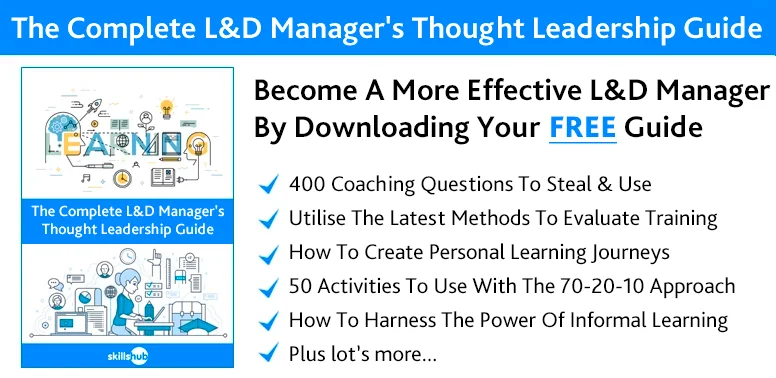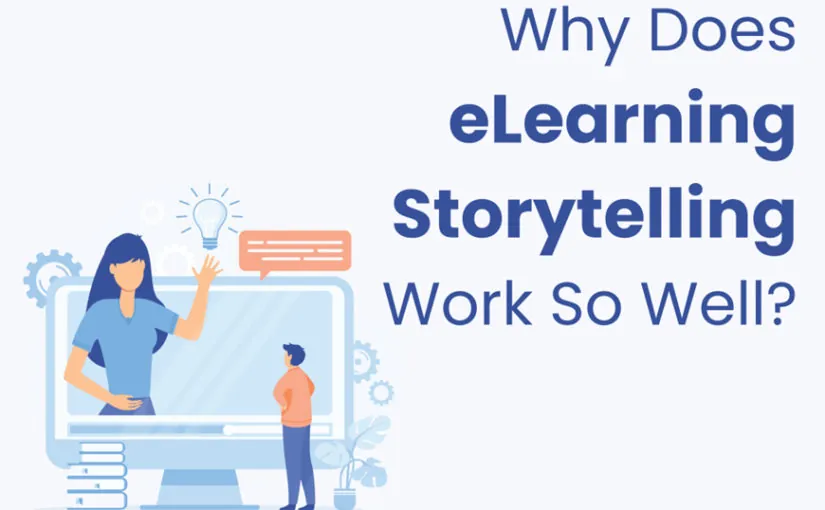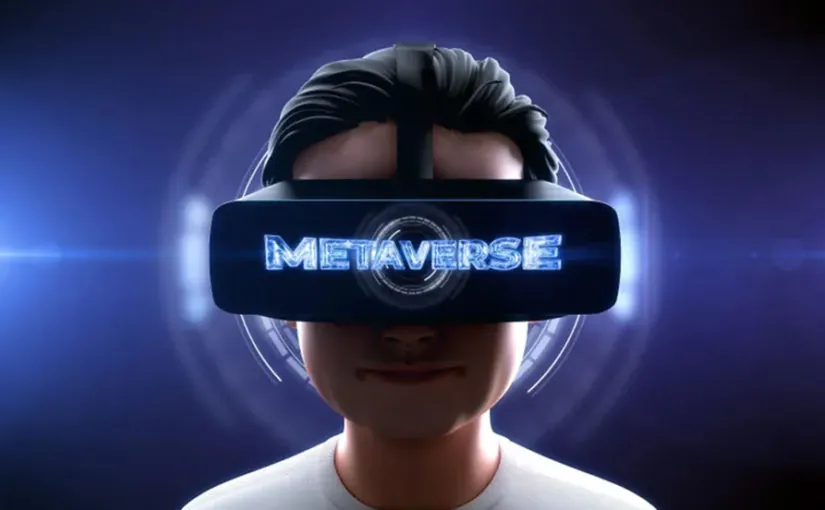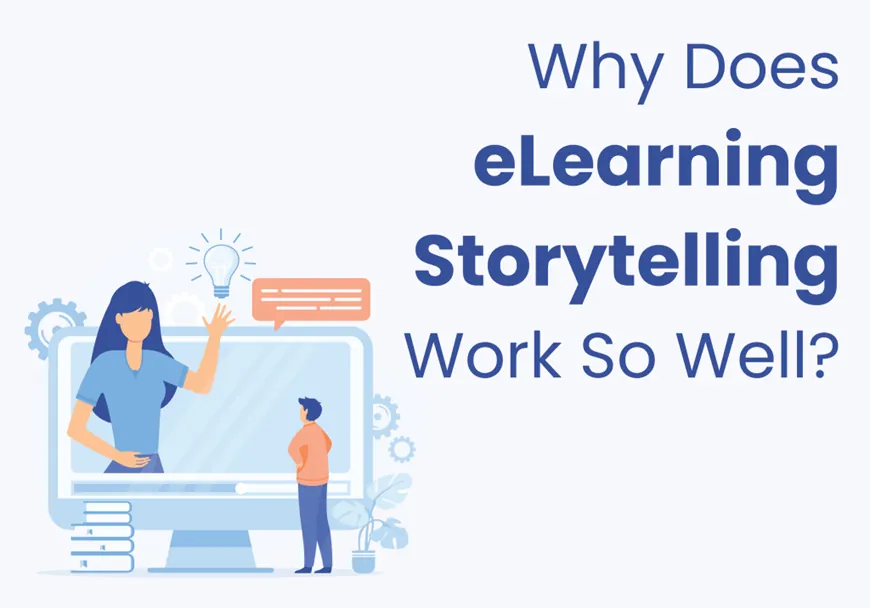
eLearning storytelling is one of the most effective ways to keep learners engaged and help content actually stick.
With so much information competing for attention, stories cut through – they connect, they resonate, and they’re remembered. Yet so many learning experiences still rely on flat slides, generic examples and walls of text.
As an eLearning company, we’ve seen how a well-told story can turn passive learners into active participants. In this blog, we’ll explore why storytelling works so well and how to start using it in your digital learning design.

The Problem with Traditional eLearning Content
Most learners can recall the storyline of a video game in detail – but ask them to recall what they learned in a recent training module, and it’s often a blank.
The issue isn’t the value of the content itself. It’s the way it’s delivered.
Traditional eLearning tends to rely on flat, fact-based delivery. It presents information, but rarely in a way that holds attention or sparks memory. That’s where it falls short.
Storytelling, by contrast, activates more areas of the brain at once. It invites learners in, keeps them engaged, and helps them form stronger, lasting connections with the content.

Learn How To Create Personal Learning Journeys For FREE!
Dry Facts, Forgettable Slides, and Zero Emotion
The information in your training might be essential – but if it’s delivered in a flat, lifeless way, it simply won’t land.
Here’s where traditional e-learning often falls down:
- It overloads the learner with too much information in too little time.
- It talks at people, rather than involving them.
- Attention spans are short – if the content doesn’t grab them, they’ll switch off.
- There’s no personal connection. Learners can’t see why it matters to them.
- And distractions? They’re constant. If content isn’t engaging, it doesn’t stand a chance.
Why Engagement Drops Without Connection
Think about the kind of content that sticks with you. A clever reel. A relatable post. Something that made you laugh or think. It grabs your attention, and for a while, you remember it.
But repeat the same format too often, and it fades into the background. That’s what happens when content stops creating a spark.
Digital learning is no different. When the delivery becomes predictable or uninspiring, attention drops. Not because the material isn’t useful – but because the brain has stopped paying attention. The solution isn’t to rewrite everything. It’s to rethink how it’s brought to life.
Why Storytelling Changes Everything
Storytelling transforms how people experience content. It shifts eLearning from passive to personal – engaging both the head and the gut.
When you frame learning within a story, you’re working with how people naturally think and process information. It mirrors how we make sense of the world – through context, emotion, and meaning.
In short, storytelling isn’t just a creative technique. It’s a smarter way to design eLearning that holds attention and makes the message stick.
How Our Brains React to Stories
There’s solid science behind why stories work so well in eLearning. The brain is constantly firing electrical signals between neurons – and stories activate more of those pathways than plain facts ever could.
Here’s why storytelling triggers stronger engagement:
- It prompts the release of oxytocin – the hormone linked to trust and connection.
- It involves more cognitive activity – learners picture the story, imagine the scenario, and process it on multiple levels.
- It strengthens memory formation – stories create richer mental activity, which helps information stick.
- It encourages synchronisation – learners become more immersed, responding as if they’re part of the story.
- It taps into empathy and social cues – not just processing the information, but feeling its impact.
- It might sound complex, but it’s deeply human. Our brains haven’t evolved at the same pace as technology – so to truly connect, digital learning needs to work with the brain, not around it.
Emotion Drives Retention and Recall
Emotion is one of the most powerful tools in digital learning. When content triggers emotion, the brain is far more likely to encode it as a lasting memory.
There’s a reason for this. Strong emotional responses release neurochemicals that lock the moment in place. That moment can be recalled later – during a quiz, in a team meeting, or in the middle of a tough real-world decision.
When eLearning content sparks an emotional reaction, it doesn’t just inform – it stays with the learner.
Stories Turn Passive Learning into Active Learning
When you use storytelling in your eLearning design, you move from delivering information to creating experiences. That shift turns passive consumption into active engagement.
Think of it like a lab experiment. Instead of just reading about a concept, the learner interacts with it. They explore, apply, and draw conclusions. And because they’re mentally involved in the process, they remember it.
It’s this kind of story-led, experience-driven design that turns “just another module” into something memorable and meaningful. Without it, learners may complete the course – but they’re unlikely to carry the learning with them.
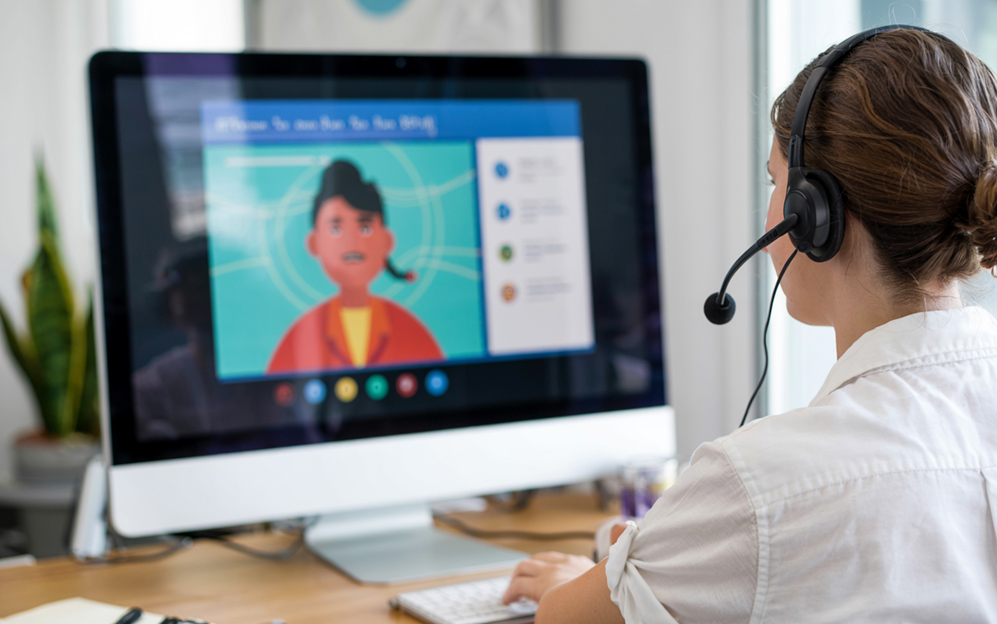
What eLearning Storytelling Looks Like in Practice
It’s easy to agree that storytelling works – but what does that actually look like in day-to-day content design?
You don’t need a full-blown narrative behind every fact or concept. And no, it shouldn’t double your workload. Instructional storytelling isn’t about turning every slide into a novel. It’s about making the content feel relevant and worth paying attention to.
Effective storytelling in eLearning is about personal connection. It gives learners a reason to care. The key is to design with their perspective in mind. What would make this information feel useful, relatable, or important?
To build that connection, focus your content around moments that matter to the learner – not just what you want to tell them.
Scenario-Based Learning That Feels Real
If you want behaviour to change, don’t just tell learners what to do – show them the consequences of getting it wrong. Use real-world scenarios that highlight both the right and wrong way of doing things. Let them see the impact, not just hear about it.
This kind of storytelling makes the learning more meaningful. It helps learners weigh decisions, see risks clearly, and understand why a better approach matters. In safety training, for instance, showing a real clip of someone ignoring protocol – and the result – will have far more impact than a checklist ever could. It’s remembered because it feels real.
Characters That Reflect the Learner’s World
The characters in your content don’t need to be flashy – they just need to feel familiar. When learners see someone who looks or sounds like them, the content feels more relatable and grounded.
You can take this further by including personal anecdotes or past experiences. It doesn’t need to be long or over-polished. A simple “Here’s something I saw firsthand…” instantly reframes the content. It moves from abstract theory to real-life relevance. That shift creates connection – and that’s where learning starts to stick.
Building Tension, Conflict, and Resolution
We’re wired to respond to stories that include challenge and resolution. That’s why drama hooks people – whether it’s a film, a book, or a training session.
Add tension to your learning content by setting up a situation where something is at stake. Introduce conflict – a decision, a problem, a risk. Then lead to resolution. Not only does this make the material more engaging, but it also mirrors how real-life decisions play out.
Bring these moments to life with visuals, questions, and reflection points. Keep it interactive. Keep it personal. The goal isn’t to lecture – it’s to guide learners through a moment that helps them think, connect, and remember.

Tips for Bringing Storytelling into Your eLearning
If you want your eLearning content to have lasting impact, storytelling is a powerful tool. But it also requires a shift in mindset. It’s not about adding more content – it’s about presenting it differently.
Storytelling doesn’t mean turning every lesson into a dramatic scene. It means creating context, framing information in ways that feel relatable, and using emotional triggers to improve recall. When done well, storytelling helps learners make sense of complex ideas, see the bigger picture, and apply knowledge with more confidence.
The goal is to design learning that doesn’t just deliver information, but actually resonates with the person on the other side of the screen.
These strategies will help you shape learning that feels relevant, memorable, and worth engaging with.
Start with the Learner’s Challenge
Begin with what matters most to the learner. What’s frustrating them? What are they unsure about? What’s blocking progress?
Great storytelling in eLearning starts with their reality – not yours. Frame the content like this: Here’s the challenge. Here’s why it matters. Here’s what helps solve it. That structure creates immediate relevance and helps learners stay focused on the value.
Keep the Language Natural, Not Corporate
If your tone sounds like a policy document, learners will switch off. Strip away the jargon and formal phrasing. Instead, use natural language – the way people actually speak and think.
Words that feel human carry more weight. They spark curiosity, emotion, and attention. That’s the language that gets remembered.
Use Visuals and Voice to Reinforce the Story
The power of digital learning lies in how many senses you can tap into. Storytelling becomes even stronger when it’s supported by visuals and audio.
Bring your content to life with imagery, colour, sound, and tone. Don’t hold back – if it’s important, make it feel that way. The brain responds to dramatic contrast, not monotone delivery.
Balance Storytelling with Clarity and Simplicity
Storytelling isn’t about adding fluff. It’s about making information easier to connect with. The goal is to be clear, not complicated.
Keep it focused. Make every moment of the story relevant. The best eLearning designs are the ones that balance speed with meaning – content that gets to the point without losing its impact.
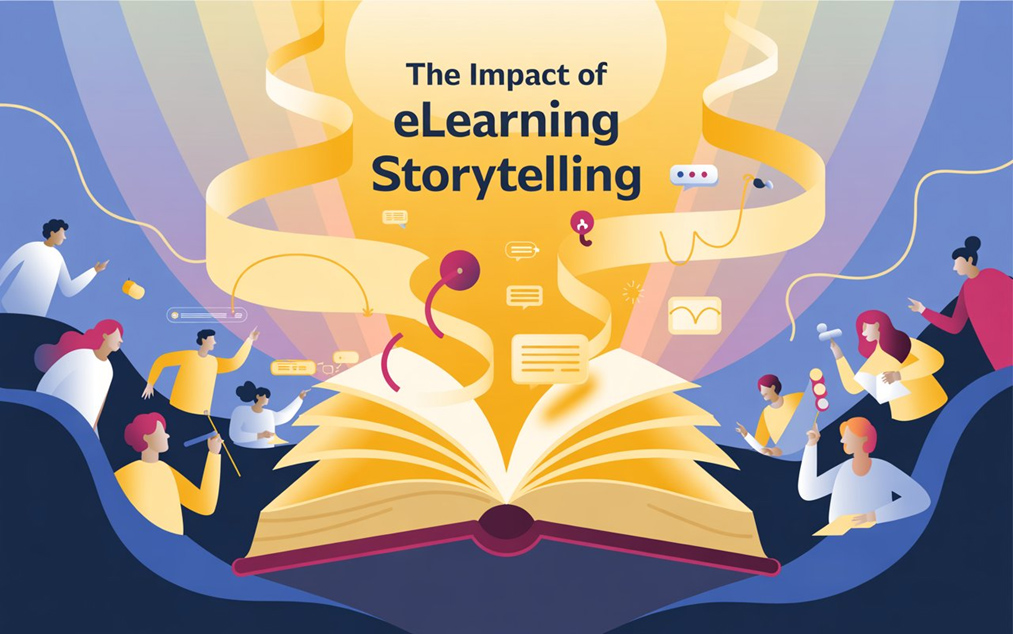
The Impact of eLearning Storytelling on Engagement
Does storytelling in eLearning really make a difference?
Absolutely. Stories align with how people naturally process information – through meaning, emotion, and connection. They provide context, relevance, and a reason to care.
That alignment makes it easier for the brain to absorb and retain what’s being learned. It’s not just content anymore. It becomes a memory.
When a learner feels something – whether it’s curiosity, tension, surprise, or empathy – the brain responds differently. It moves out of passive mode and starts to engage. That’s the shift that turns information into understanding.
Storytelling also helps overcome one of the biggest challenges in digital learning: distraction. A compelling story cuts through the noise and keeps the learner focused. They’re no longer just completing a module – they’re following a journey. And that journey
What the Research Tells Us
Facts presented on a PowerPoint slide stimulate two areas of the brain: The Broca’s area and the Wernicke’s area. Then, it stops.
Conversely, stories trigger every part of the brain, including language processing areas and areas of empathy. They trigger the release of oxytocin, cortisol, and dopamine.
Examples of Courses That Get It Right
Here are a few real-world examples of how we’ve brought storytelling into eLearning at Skillshub – and why it worked:
Role-play simulations – Reynolds (h4)
For this project, we used scenario-based role-play grounded in everyday work situations. The simulations allowed learners to step into realistic roles and make decisions – which captured attention and boosted neural engagement.
Product launch – MG (h4)
When MG launched a new car, their sales teams needed to absorb a huge volume of detailed product information. We built presenter-led modules using Articulate Storyline, rolled out globally. The structure combined storytelling with interactive assessments and quizzes to hold attention and support retention.
Soft skill animations (h4)
To build short, punchy content around soft skills, we used scripted animations and storyboards. These modules were tightly focused, practical, and designed to deliver a clear message quickly – with visuals and storytelling woven in to help the learning stick.
Across all of these, the goal was the same: create content that speaks to the learner, holds their attention, and makes the message memorable. Sometimes that means using immersive scenarios. Other times, it’s sharing a real experience that lands because it feels personal and true.
Conclusion
For eLearning storytelling, you’ll need to be a bit more creative. There are many ways to do so, including bespoke eLearning strategies.
You may wish to explore engaging eLearning content. Learners can also embrace an intuitive eLearning platform to learn and grow their skills consistently.
If you’re developing your next educational module through eLearning, consider what you can do to engage your learners’ brains more fully. Quite a worthy challenge, it’s going to improve the effectiveness of the early educational campaign.



